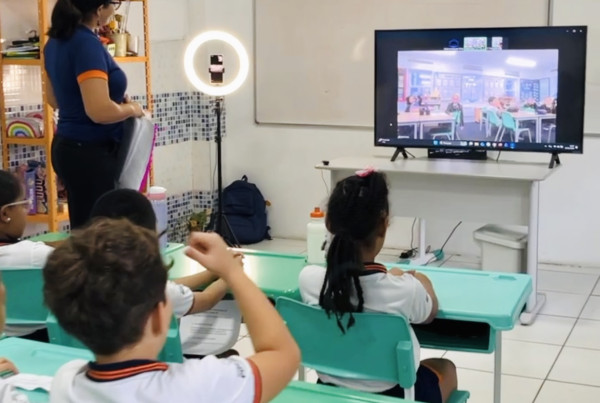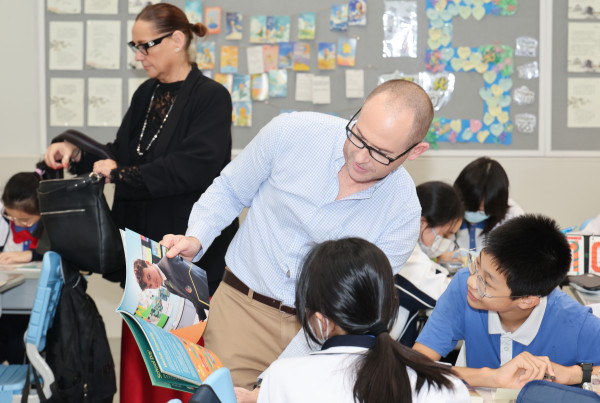The following article comes from Anna Czebiolko, Head of EAL in North Yorkshire, UK.
“When the vision is clear, strategy is easy.” The unknown author of the phrase has a valuable point. Even though there is no official national programme in the United Kingdom related to supporting multilingual pupils, every school has developed their own practical strategies related to this educational field. Rightfully, as the Department for Education (DfE) expects that effective teaching and learning of students with English as an additional language (EAL) take place through the national curriculum.[1]
The intent of any curriculum is a framework, which aims to establish the priorities and directions that educators decide to follow in order to meet the curricular requirements for pupils. It is understandable that every education provider would present different propositions due to their occurring and factual needs. It does not convey that even incomparably different schools cannot consider the same reflection points. The answers ought construct an inspirational vision and enable an ambitious plan of action. Based on the EAL Curriculum Intent, which was written by me in a secondary school setting, I will present what can be taken into account in the process of establishing a whole-school strategy for working with multicultural pupils and their families.
1. What does multilingualism mean to us?
What would the world be like without translations of foreign books, films or interviews? Multilingualism in a global context is an asset. We all benefit from open access to multicultural art, literature or research. Isn’t it the same result in a diverse school environment? Multilingual pupils make significant contributions and a school curriculum has a capacity to be a reflection of this statement. This belief can be presented by promoting students’ home languages and backgrounds. The language awareness can be also developed across various educational spheres.
2. What do we want our pupils to achieve?
By acknowledging that access to the curriculum is pupils’ legal right, this reply cannot be considered. Experiencing favourable outcomes in all areas of school life sounds more prominent, yet it still does not provide a satisfactory explanation. If education plays a part in general success in life, then the response should relate to maximising learners’ knowledge, cultural capital and building a strong self-belief, which can help later in triumphing in adult life.
3. What does our whole-school curriculum actively promote?
Paying attention to the language-related context, this part would refer to what factors could support pupils’ language acquisition? Ambitious thinking may guide towards numerous aspects. However, it may be more advantageous to clarify the priority needs. Concentrating on a wide-raging academic vocabulary, followed by a depth of comprehension are examples.

4. How can we teach the language of instructions?
Supplementary, English as an exemple can be taught as a foreign language. There are many popular courses for pupils at different levels. Wouldn’t it be more effective if English was taught in a cross-curricular way though? By identifying that every class activity makes an opportunity to exercise pupils’ Listening, Speaking, Reading or Writing skills, the language itself can be learnt through real-life practices. Indeed, this approach requires specialist teaching techniques and smart, personalised resources to be implemented by educators. Ultimately, it makes an essential element of accessing learning materials.
5. How can language awareness be built?
“Language awareness is a conscious perception and sensitivity to language learning and is an explicit knowledge about language.”[1]This citation suggests that learning a language is an ongoing process. If so, the understanding that speakers of other languages have specific linguistic needs, may lead to the popularisation of pupil-friendly teaching methods and resources. Ultimately, language awareness will be presented by giving feedback and explaining linguistic rules, simplifying the language, giving time to think prior to a pupil response, etc.
6. What is the role of the EAL department?
Personally speaking, the role of the EAL department should focus on ensuring that all pupils have access to a broad, balanced and appropriate curriculum and the linguistic barriers are limited in order to ensure every student reaches their learning potential. The main responsibilities of any department are usually dependant on current needs and trends of the current pupil community. However, it would not be incorrect to list support for learners, development of the multicultural provision and offer for pupils and their families as well as improvement of EAL-related teaching expertise as the main priorities.
To wrap it all up, EAL Curriculum Content can be synonymous with a vision for the multilingual provision in a whole-school setting. It is a summary of aims that a school declares and plans to work towards to. It allows a thorough strategy design. It clarifies priorities. It inspires. It opens the door to further consideration. What other questions would you pose while drafting your document? What does your Curriculum Intent focus on? What other strategies have you implemented in your educational environment?
[1] Statutory guidance: National curriculum in England: Framework for key stages 1 to 4, Updated 2 December 2014

Author
Anna Czebiolko, Head of EAL
Currently Anna Czebiolko is Head of EAL in a secondary school in North Yorkshire. Prior to that, she coordinated the EAL provision for seven years in a large secondary academy in Leeds. Since starting to work in the field of multicultural education in 2009, she has worked with multilingual learners in every year group from nursery to sixth form. She is always willing to try innovative methods with her students and to share her knowledge with teachers and other practitioners. Anna often presents her experience and expertise at conferences. She writes articles about current teaching and learning methods. She is a member of NALDIC (The National Subject Association for EAL), and she regularly contributes to the EAL Blog on the organisation’s website https://naldic.org.uk/naldic-blog/. Anna’s working strategy is taking a whole-school approach towards supporting pupils with English as an additional language and she believes that the most effective outcomes are built on cross-organisational collaborations and sharing best practice.




